#High-bandwidth Memory
Explore tagged Tumblr posts
Text
Micron samples 12-layer 36GB HBM4 memory to major customers
June 17, 2025 /SemiMedia/ — Micron Technology has begun sampling its 12-layer 36GB HBM4 (High Bandwidth Memory) to major customers, the company announced on June 12. Built on its 1-beta DRAM process node, the new HBM4 integrates an advanced 12-high stack design and an embedded memory built-in self-test (MBIST) feature to support next-generation AI workloads. As demand for generative AI…
#3D stacked memory#AI memory solutions#DRAM packaging#electronic components news#Electronic components supplier#Electronic parts supplier#generative AI chips#high bandwidth memory#Micron HBM4#semiconductor news
0 notes
Text
The hybrid memory cube and high-bandwidth memory market was valued at around $4,078.9 million in 2023 and is expected to reach $27,078.6 million by 2033, at a CAGR of 20.84% from 2023 to 2033.
#Hybrid Memory Cube and High-Bandwidth Memory Market#Hybrid Memory Cube and High-Bandwidth Memory Report#Hybrid Memory Cube and High-Bandwidth Memory Industry#Electronics-Semiconductor#BISResearch
0 notes
Text
Midnight Pals: Hackin'
King: i can't believe elon's grok is pretending i'm friends with him King: i need to stop that AI before everyone believes it! King: i've got to hire a hacker King: franz, you've got to help me Franz Kafka: what? me? Barker: steve, no
Kafka: i'm not a hacker King: oh i thought franz was a hacker Barker: what gave you THAT impression? King: you know, with the cat ear headphones and the striped thigh socks Barker: no steve that's something ENTIRELY different Kafka: n-no it isn't, on second thought yes I'm totally a hacker
Kafka: it means i'm a hacker, nothing else Barker: sure franz Kafka: it does! it totally means i'm a hacker! Barker: franz, go play with your blahaj plush, the adults are talking here
Barker: you know who you need? you need william gibson Barker: the best hacker money can buy King: william gibson? how do i contact him? Barker: you don't Barker: he'll contact you
King: can you really hack grok, william? William Gibson: [wearing black duster and fingerless black gloves] my hacker name is shadow gigabyte King: oh sorry Gibson: can i hack grok? listen kid i was cyberbyting the megabyte mainframe when you were just rebooting your motherboard mouse data bandwidth modem email King: wow!
Gibson: my CPU is a neural net processer, a learning computer King: wow he really sounds like he knows what he's talking about! King: that definitely sounds like hacker talk to me Gibson: CD Rom Gibson: internet Joe Hill: dad can i talk to you for a second King: not now joe daddy's hiring a hacker
Gibson: [wildly slapping keyboard] i'll re-index the mega bit blaster cyber codex Gibson: [wildly slapping keyboard] now we'll cybersecurity the lock box data center King: hey what happens if you push that button? Gibson: what the-- no!! [klaxons sound] King: what's that mean? Gibson: shit Gibson: we've got company
Gibson: sentient cyber virus electronic guard cyberbots Gibson: real high tech Gibson: state of the art in bio-tech wetware neural-data scrapers Gibson: [putting on sunglasses with red laser scope] and they ain't friendly
King: what are we going to do?! Gibson: kid, you keep your hands to yourself unless you wanna become roadkill on the information super highway!!! Gibson: hold on to your CPU (central processing unit)!!!
Gibson: [wildly slapping keyboard] gotta reconfigure the darkweb logistics for ethernet wavetech Gibson: [wildly slapping keyboard] upload the memory downloader for dumpware backup Gibson: [wildly slapping keyboard] uncodify the cyberpatch modifer aaaaand Gibson: i'm in
King: wow, you hacked twitter?? how did you do it? Gibson: the greatest hackers never reveal their secrets [earlier] Gibson: [wearing fake mustache] hey elon its me catturd Gibson: could you give me your password? Elon Musk: sure it's "picklerick420"!
#midnight pals#the midnight society#midnight society#stephen king#clive barker#franz kafka#joe hill#william gibson#elon musk
537 notes
·
View notes
Note
What is your current opinion on Unreal Engine 5? Between Digital Foundry, content creators, and people on social media, everyone appears to be constantly attacking UE5 for performance issues (stuttering, frame rate, etc.). Is this criticism warranted, or is it more a case of developers still getting used to UE5 and its complexities (meaning it will likely improve in time)?
Everything improves with time as the engineers learn the details and optimize their work. This is true of every tech platform ever and won't be any more different with Unreal Engine 5 than it has been with UE4, 3, or anything else. That said... after having very recently worked with UE5 for enough time to get used to some of its foibles and having looked into some core engineering issues in a project utilizing some of the new tech introduced in UE5 (and the caveats and side effects of using that tech), I can say with fair confidence that (some) complaints about the performance issues are definitely warranted. These aren't global to all UE5 projects, but they are major performance issues we ran into and had to solve.
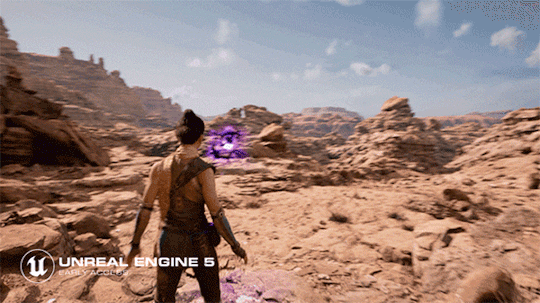
One major issue we ran into was with Nanite. Nanite is the new tech that allows incredibly detailed high poly models, a sort of [LOD system] on steroids. The Entity Component System of the Unreal Engine (every actor is a bag of individual components) allows developers to glom nanite meshes onto just about anything and everything including characters, making it very powerful and quick to stand up various different visuals. However, this also requires significant time spent optimizing that geometry for lighting and for use in game - interpenetrating bits and pieces that don't necessarily need to calculate lighting or normals or shadows unnecessarily add to the performance cost must be purged from those nanite models. Nanite looks great, but has issues that need to be ironed out and the documentation on those issues isn't fully formed because they're still being discovered (and Epic is still working on fixing them). We had major performance issues on any characters we built using nanite, which meant that our long-term goal for performance was actually to de-nanite our characters completely.

Another major issue I ran into was with the new UE5 World Partition system. World Partition is essentially their replacement for their old World Composition system, it's a means of handling level streaming for large contiguous world spaces. In any large open world, you're going to have to have individual tiles that get streamed in as the player approaches them - there's no reason to fit the entire visible world into memory at any given time with all the bells and whistles when the player can only see a small part of it. The World Partition system is supposed to stream in the necessary bits piecemeal and allow for seamless play. Unfortunately, there are a lot of issues with it that are just not documented and/or not fixed yet. I personally ran into issues with navmesh generation (the map layer used for AI pathfinding) using the World Partition that I had to ask Epic about, and their engineers responded with "Thanks for finding this bug. We'll fix it eventually, likely not in the next patch."

Most of these issues will eventually get ironed out, documented, and/or fixed as they come to light. That's pretty normal for any major piece of technology - things improve and mature as more people use it and the dev team has the time and bandwidth to fix bugs, document things better, and add quality of life features. Because this tech is still fairly new, all of the expected bleeding edge problems are showing up. You're seeing those results - the games that are forced to use the new less-tested systems are uncovering the issues (performance, bugs, missing functionality, etc.) as they go. Epic is making fixes and improvements, but us third-party game devs must still ship our games and this kind of issue is par for the course.
[Join us on Discord] and/or [Support us on Patreon]
Got a burning question you want answered?
Short questions: Ask a Game Dev on Twitter
Short questions: Ask a Game Dev on BlueSky
Long questions: Ask a Game Dev on Tumblr
Frequent Questions: The FAQ
64 notes
·
View notes
Text
Working It Out
A post-8x16 BuckTommy reconciliation story
Author's Note: The first part of my first ever fic! I honestly never thought that I'd write something like this, but my pookies are deeply affecting to me right now, so I gave it a shot. Go easy on me! Feedback is very much welcome. I'm planning on this being a three-part story, and done by the time 8x17 comes out. All of it will go on Ao3 when my account is approved (like I said, never thought I'd be doing this). Enjoy!
______________________________________________________________
Part 1: Numb
Everything was dimmer after Bobby died. The sun shone a little weaker. The glint in everyone’s eyes was gone. Color had drained from the trees, from the rocks, from the signs lining the streets. The nights were darker, longer. Everything was sluggish, effortful. Waking up, going to sleep. It was all more difficult than it ever had been.
Hold it together.
Buck sighed. He had been doing that a lot. He closed his eyes for a moment, wincing, trying to tune out the world for a moment so he could collect himself. They were en route to a call, Hen, Chim, interim Captain Gerrard, and himself sitting in a palpable silence. No one was looking at each other, the members of the 118 arrested in a perpetual daze.
None of us should be working right now, Buck thought to himself.
But life goes on. It had to, for their own sakes. Even in this joyless, grey-scale world, they had jobs to do. People to help. Duties to carry out. Buck knew that, that he had a duty to the rest of the 118.
They’re gonna need you.
Those words, that Bobby had given him right at the end, hung heavy. They were the last orders Bobby would ever give him, and Buck had no intention of disobeying these like he had so many before. So he had grit his teeth, put on a brave face, done whatever he had to do to make himself the rock that his family needed. Even if that meant he could barely remember anything that had happened these past few weeks, even if that meant lying to his loved ones that he was okay, he was willing to make that sacrifice.
Buck sighed again. The things I’d do for you, Bobby.
They pulled up to the scene, an old power station on the outskirts of the city. Abandoned and scheduled for decommissioning, it had apparently become something of a hideout for some idiot teens trying to get away from it all.
Can’t say I don’t know the feeling.
The fire was massive, smoke billowing high into the night sky. Several stations were involved in the operation; several trucks and assorted emergency vehicles amassed in a perimeter around the building. As Buck slid out from the truck, he heard helicopters overhead, running air support. Yet another sigh. His eyes went glassy for a moment, causing him to quickly blink any tears away before they could form.
God, I can’t think about him right now.
Tommy. If Buck was being honest, he hadn’t thought about him at all. How could he? What possible bandwidth could he have to ponder where he stood with that man? They hadn’t spoken since that night in the chopper.
And for you, Tommy had said.
Buck rolled his eyes at the memory. That line was out of a movie. Those kinds of heroics weren’t exciting anymore, not to this Buck. The Buck that had been excited, been so happy and so invested in the relationship he had with Tommy, been devastated by the breakup, who had to pull out all the stops to restrain himself from texting him every day since, who had gone against all his better judgement inviting him to his place that night, and had called him when he needed help…he was dead. Or at the very least, that all felt like it had happened a lifetime ago. This new world Buck was living in…it didn’t have room for emotions like that.
Buck barely remembered seeing him at the funeral. Buck barely remembered the funeral at all. Chim had asked Tommy to be a pallbearer, to have Bobby’s original team alongside the new one. A generous gesture, Buck thought, given what had gone down between them - the rest of the 118 didn’t hold Tommy in such high esteem after he had dumped Buck so unceremoniously. Chim had asked Buck if he was alright with it, and Buck had said he was - he didn’t have the energy to put up any kind of fight about it, or to even consider what his actual feelings were, whether this new life had room for Tommy in it or not. He was too exhausted to consider himself at all.
Buck squeezed his eyes shut again, trying to cut off the pain.
Now’s not the time. You have a job to do.
He gathered himself, his expression going vacant as he moved through his responsibilities like a zombie. He had done jobs like this a thousand times before, and this one was no different. Go through the motions, do your duty, and go home. He could tell his team was lacking, their minds scattered and hesitating. He had been doing his best to pick up their slack. If he didn’t, who would?
Two teens, a young couple who had been in the middle of some tryst when the wires went hot and started the fire, were trapped inside. Buck had his orders from Gerrard, and the extraction operation was underway. Given the electrically volatile nature of the site, only the main entrance was deemed safe enough to get inside.
“Buck, you with us?” Hen asked, a sympathetic look on her face.
She had had that expression plastered on ever since Bobby died. Buck could see the pain behind her eyes.
“Yeah, I’m here.”
Liar.
Buck swallowed the pang of guilt he felt and pressed on.
“Let’s get this done.”
They trudged forward into the blaze.
The call had come in late after the fire had started due to its relatively remote location - the building was already starting to crumble. Pillars were coming down, the ceiling had buckled in portions, and there was enough refuse strewn about to keep the blaze going.
What a pigsty this place must have been. Guess the fire is saving the city a clean-up job.
“They’ve already swept the ground floor, we need to get up top!” Buck barely registered the words his team was shouting, or who they were coming from.
Second floor, got it.
“The stairs look intact! I’m heading up!” Buck shouted back. He started to make his way over to a side stairwell, his eyes trained on the floor for any live-wire debris. Hugging the wall, he headed up the stairs, treading carefully and testing each step to ensure he didn't accidentally fall through.
“Fire Department! Call out!” He shouts through the haze of smoke.
“Here! We’re here!”
He hears a young woman’s voice coming from down the second-floor hallway.
“My boyfriend, he’s- he’s passed out! I don’t know if he’s breathing!”
“Hear that, Hen?” Buck calls down. “I’ve got someone for you!”
“I’ll be standing by for resuscitation,” she says cooly, all business.
Moving towards the voices, he spots a door at the end of the hallway slightly ajar. Inside, he finds two teens, huddled in the corner of the room, behind some file cabinets. The girl is holding her legs close to her body, clearly in terror at her present situation. The boy is flat on the ground, eyes closed and mouth agape. Buck heads towards him first, kneeling down to hoist him over a shoulder. He motions towards the girl.
“Can you walk?”
She nods her head, shaken but not catatonic.
“Follow me.”
He heaves the unconscious young man and grabs the girl's arm, pulling her out of the room. Buck heard rumbling from overhead. The roof was rapidly losing stability, liable to come crashing down soon.
For fuck’s sake.
Buck didn’t have the energy for this. With the kid on his shoulder and worrying about electrocution between himself and the girl, he was barely hanging in there as it was. He guided them down the stairwell, back to the ground floor. He heard crumbling from above and behind him moments later.
Just make it out. Just make it out. Just a little further. Do it for the team. Do it for Bobby. Just a little further.
The heat was getting overwhelming and the foundations of the building were completely spent. Buck eyed a particularly nasty crack in the ceiling that was quickly spreading above them.
“We’re gonna need to pick up the pace here!” he shouted over his shoulder. “Just a little more!”
He was talking to himself as much as he was the girl.
“Copy my movements!”
Chim and Hen were up ahead, ducking under wires and stepping over debris, Buck following close behind, trying his best to communicate where it was safe to stand. The entrance slowly came into view. Buck glanced back up at the ceiling.
“It’s gonna come down any second! Take them!”
He shrugged off the boy, Hen firmly wrapping a hand under his knees and the other under his back.
“Go on ahead! Follow him!”
He pointed urgently to Chim.
“O-OK!”
The girl let go of his hand and trepidatiously went ahead of Buck.
Bring up the rear. Gotta make sure they’re alright.
Buck noticed himself slowing down a bit, his strength leaving him. Just then, there was a boom overhead. The roof had come down, landing on the first floor ceiling. The crack grew tremendously, the tiles holding on for a moment - then it came down. Buck was completely cut off from the others, and from the entrance.
“Buck! Are you still there!” Chim’s voice was heavily muffled by the rubble.
Fuck.
“I’m here! I-I’m OK!” Buck did his best to shout, his voice hoarse.
“I’ll look for another way!”
Where? This whole place is a death trap. I’m not even buying my own bullshit at this point.
“No! Stay put! We’ll clear the entrance!”
“There’s no time! Get clear!”
Get clear.
“Buck!”
Fuck off, Chim. Get the kids and get out. Be safe.
Buck winced and closed his eyes again. He had been doing that a lot lately, too. Shoving down the guilt he felt about that particular intrusive thought, he turned around, scanning what was left of the ground floor for something, anything. The windows were shot, wires had come apart everywhere - there were no other options. He took a deep breath, steeled himself, and headed back in towards the flames.
Through what remained of what must have once been the lobby, he came upon a bank of elevators in the back corner. Most of them were shut, but one of the shafts’ doors were slightly bent, and a gap was large enough for Buck to squeeze his arm through and pry them open. The shaft was empty, and shining his flashlight down, Buck could see a basement floor beneath him.
The fire started upstairs - this might be insulated enough. Let's hope the elevator isn’t in service.
He chuckled to himself humorlessly, reaching out tentatively for the chord, giving it a tug to assess its worthiness at supporting himself and his gear. Behind him, more of the ceiling was coming down, landing with a great thud nervously close to his feet.
Good enough.
Taking the chord in his hand, he stepped off the edge, rappelling down into the darkness.
#bucktommy#tommy kinard#evan buckley#911 abc#911 spoilers#lou ferrigno jr#oliver stark#fanfic#bucktommy fic
34 notes
·
View notes
Note
okok came up with something:
do you think that when/if MCU rocket hugs someone he gets a little nervous/scared as it reminds him of Lylla and how she died?
nonnie you sent this literally two weeks ago. i’m so sorry my bandwidth has been consumed by other shit, but i am super-grateful for this ask, and i hope you are having the loveliest of lovely days.
the short answer is: i think that rocket’s reaction to touch (and therefore hugs) is ALWAYS complicated.
but when have i ever settled for the short answer?
look. the first touch rocket remembers? it caused pure, splintering, white-hot pain. agony, in every muscle and bone. then he was tossed into a cage — taught that his body was not worth respecting and that his comfort would not be cared for, from the very first moments of his sentient consciousness.
and yet. that lesson was followed so closely by a kindness: lylla’s gentle, healing touch to his wounded brow.
i think about the high evolutionary, gripping rocket’s head like it was a geode he wanted to crack open. the veneer of his tenderness, layered thin and dangerous over a threat. i think of the flicker of recognition and wariness we see in young rocket’s eyes. while i suspect most actual surgeries were performed by the recorders, i am certain rocket has been hurt by these hands before: watched them dial up the voltage on an electric shock, perhaps. felt them scruff him and drag him back to his cage when he wasn’t performing up to expectations: too many extra -esses and -istics on his words, maybe. i think rocket craved the approval of his sire right up until those final few moments on halfworld, and a kind-seeming stroke to the crown of his head had meant the world to him.
and i think that first hug meant even more. he’d snuggled with floor in their shared cage but lylla is his hero: the first one to show him a kind touch, the one who understands him best. and i think he felt her death when she was shot in his arms.
i’ve said it before and i’ll say it again: so much of a raccoon’s brain is focused on processing tactile data. approximately two-thirds of the sensory perception area in their cerebral vortexes are dedicated to interpreting touch. by comparison — and wildly oversimplified — the average human brain relies primarily on sight, which only makes up about a third to a little over half of our sensory input. hearing is next, and finally, taste/smell/touch combined makes up only a tenth of our typical sensory perception. so all of rocket’s contradicting, conflicting experiences with touch are magnified — probably beyond the scope of our imaginations.
which makes hugs complicated.
he’s so touchstarved. he wants all the hugs. he doesn’t trust or like many people enough to want to want to hug them, though — at least not before groot, and that took some time. thank god the big guy’s persistent. and yeah, sure, there’s some ptsd — some painful flashbacks, some intrusive memories the first few times he lets pete hug him, or gamora, or drax. (not mantis, though. not yet. a hug from an empath is far too dangerous.)
but more than fearing an immediate replay of his first hug or a bright painful splash of nerves when he finally embraces someone — awkwardly, with a half-hearted pat-on-the-back — i think rocket is longterm-superstitious. he’d deny it, of course. but deep down, i’m afraid our poor guy believes his touch is poison — especially after groot senior dies.
sooner or later, the people who rocket attaches himself to — they all die. he is the common denominator.
i have a lil headcanon that on xandar, after the battle with ronan and groot’s sacrifice, drax’s gentle touch to rocket’s forehead reminds him of that first touch from lylla. i think that might be terrifying for rocket. i think that’s why he tries so hard to fuck everyone over on sovereign. he wants them to stay, and he wants them to leave. he wants to push them away — for their own safety, and for his. not consciously, of course — that guy’s a mess — but he’s got this uncontrollable impulse to sabotage any real chance at any real relationship that he’s got.
and then there’s the snap.
i don’t think the average person really notices rocket’s complicated relationship with touch and hugs — he hides it well under the mask of not bein’ a touchy guy and not bein’ a frickin’ sap. but it’s afterward — after the snap, when all his friends are safely returned — that we briefly see his fear, before he manages to cover it up again.
even his friends had forgotten, perhaps — just how reticent he’d used to be, how unwilling to engage in any sort of physical affection. groot probably doesn’t even remember that time in his father’s life at all, because rocket would have pushed himself to ignore it so he could better take care of his young son. and over the course of the guardians’ shared time together, rocket would have gotten used to the occasional backslap or headpat or hug, in a sort of exposure-therapy-way. craved them, always. feared them, still. but also, been sort of inoculated against the superstitious instinctive terror.
there are no booster shots over the course of the snap though — only a seeming confirmation of his worst fears.
i suspect there’s this heartbreaking moment off-screen, sometime in the aftermath of his friends’ return. it’s probably with pete. one night, late on the flight deck: just rocket and pete and nebula, staying awake deep into the sleep-shift and drinking to gamora’s memory. talking about her, and about everyone else’s five year absence. at some point, rocket will say something unintentionally revealing, and pete will get a glimpse of just how hard these past five years were for his friend — just how much pain and loneliness he’s been swamped in. and since pete is a very tactile guy — for a human, anyway — so i’m sure he goes in for a hug.
and rocket recoils so hard that he knocks his fucking chair over, spills his drink, and falls on his ass.
because he’s that afraid of hurting his friend.
there’s a moment, and then pete laughs — says something about rocket having become clumsier over the years, or that he can’t hold his liquor anymore. maybe pete’s too drunk or self-absorbed to put it together; maybe he’s not. maybe he sees the flinch for what it is, and elects not to embarrass his bestie by pointing it out.
yeah yeah, laugh it up, rocket will say, climbing back to his feet and righting his chair, brushing the alcohol off his jumpsuit and rolling his eyes.
but nebula knows. there’ve been too many drunk confessions between them over the five years of loneliness. and after pete goes to bed, she leans across the table, and laces her fingers through rocket’s. he still visibly flinches, but he’s used to this, at least: nebula’s silent reminder that she’s still here, through everything.
it sounds grim, i know. but don’t forget — we’ve seen the future. we know there will come a time, in only a few short years, when rocket will welcome hugs from his worried friends, from his son. when he’ll very tenderly hold little raccoons in his arms, and bring them home.
and he’ll realize, at some point — perhaps beyond the arête wreckage and the dancing, when the raccoons are grown and the star children aren’t really children anymore, and phyla is leading the next mission all on her own — that his touch isn’t poison at all.
that it has saved so many things, and helped them grow.
headcanons & imagines | drax & lylla symmatry pt 1 | raccoon sensory perception | rocket’s love languages pt 2 (touch)
27 notes
·
View notes
Text
Erroneous Ambient Threat Elevation (EATE) - Transformers have a threat meter active at all times, that subconsciously assesses potential and ongoing danger around them. Sometimes it is not accurate and registers too high, resulting in distress in completely safe settings, or a disproportionate response to a small threat. EATE can manifest as anxiety with unclear cause (confusing the affected) or active, even specific paranoia. Paranoia can also cause EATE. Enough mental distress and conviction that there is a threat over an extended period of time can force/convince the meter to elevate.
(Unexplained) Bandwidth Deficiency (U-BD) - Bandwidth is the very literal attention span and total brain power of a Transformer, the amount which varies by individual. Too much stimuli or too many background processes (as examples of causes) all at once can eat into bandwidth, spreading their attention thin, and cause a decline in mental acuity. Confusion, an inability to grasp previously understood concepts, and the inability to think things through is common. Attempting to force bandwidth usage past its limit can even disrupt gyroscopic systems and stabilizers, resulting in dizziness. This can happen to anyone and is simply how bandwidth functions. It becomes a condition with repeated or extended periods of shortage, usually with very disruptive expressions. Some Transformers are simply shorter on bandwidth than others, or their cortex allocates its resources poorly (standard BD). But if the cause can't be discerned, then it is U-BD. This also affects memory formation and recall.
#nerd stuff#transformers#maccadam#headcanon#i like making up shit#just a few examples of what is wrong with SG Cyclonus#robo anxiety and robo ADHD. also sensory overload and brain fog
85 notes
·
View notes
Note
i have what is probably a really obscure question - back in the day when 8tracks was a thing, there was a sweat (acid soup) mix that i THINK you made + posted, with a cover of LOVEFOOL. i'm trying to find that particular cover of LOVEFOOL. do you know which it was?
okay so this has driven me CRAZY bc i REMEMBER what ur talking about, but i cannot find it at all. i tried to do some basic sleuthing, like poking around searching at my twitter and stuff, but all i find from then is 1. scattered evidence of a few ppl being like "ira what the hell is this demonic cover of lovefool" and 2. me gloating about how i only found said demonic cover of lovefool through like a 45 minute google rabbit hole. not helpful, past ira. also, i must have downloaded it at some point to upload it to 8tracks, but that would have been like, two laptops ago and there's no way i can dig up the file.
anyway i got a bit closer by digging a little more -- i have this kind of hazy memory of literally just typing in something like "cool lovefool cover" and trawling list articles, and when i tried to recreate it i found this meanspirited little vice piece with a description that i am like, 99.9999% SURE IS REFERENCING THE VERSION WE'RE TALKING ABOUT!!!!! ...but unfortunately bc it's from 2012, all the embeds are gone/broken (and as far as i can tell there's no remnants of links even when i inspect the page, tho i'm not very tech literate when it comes to stuff like this so maybe i'm missing something):
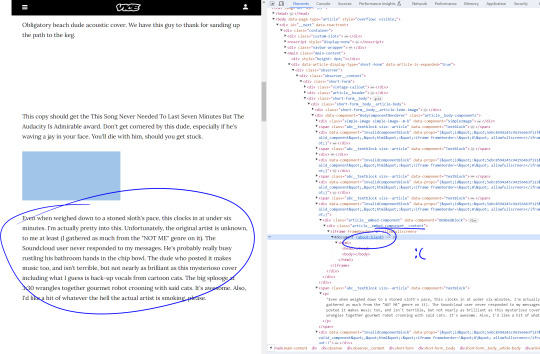
and as we can see here, even back then, if this was the cover we're thinking of, it wasn't attributed or traceable. but we do glean a LITTLE info from this: "under six minutes" means it was five and change, and it must have been uploaded to soundcloud at least 11 years ago.
i tried trawling thru soundcloud w those parameters in mind but couldn't find it... unfortunately i think there's a high chance the original account that uploaded it doesn't exist anymore. (i may have missed something, like maybe a different account has re-uploaded it and i scrolled past it bc i was looking at upload date, but expanding the search to any year is something i don't have the bandwidth for rn!!)
this might be a workable amount of info to at least go to reddit or something with? i feel like there must be at least one subreddit that's specifically dedicated to "help me find this obscure soundcloud remix that got deleted." but for now i'm afraid i must admit defeat, which sucks bc now that you've reminded me of it *i* really wanna listen to the decade-old demonic cover of lovefool too :')
#additionally the mix does still technically exist on 8tracks but that wasn't helpful either#bc the way 8tracks works now is it just searches the title+artist of the originally uploaded track on youtube.#so i clicked thru to get to the weird lovefool cover and it just stalls out on that one :/#SIGH.......... well. file this under 'stark reminders about the impermanence of shit online'#also from what i've seen soundcloud's search function is just atrocious. so i also may have missed it just in a technical issues sense
195 notes
·
View notes
Text
“Is it over? Is it really over?” | Mark Watney x Reader
Fictober 2023 Day 24 - “Is it over? Is it really over?”
Mark Watney x Reader
Warnings: making out, occasional swearing, use of Y/N, Matt Damon (Matt I hate you and your use of slurs, but why do you keep showing up in my favourite films? 😫)

A quiet day is usually hard to find at NASA, but since the rescue of stranded astronauts Mark Watney and Y/N L/N from Mars, things had certainly calmed down as the Hermes ship continued its almost year-long journey back to Earth, safe and sound.
Instead of calculating trajectories and plotting courses, the scientists at NASA now had a slightly more chilled job of combing through the hundreds of video logs made by the pair of astronauts during their time of exile. As soon as they arrived at the Ares IV MAV, the high-bandwidth connection on board was used to upload the diaries to Earth, to chronical their time on the red planet, but also provide the memory of their final living days in case the worst occurred during their rescue mission.
Thankfully, the worst did not happen.
Vincent Kapoor and Mindy Park now crowded around an office computer scanning the videos for any important information they missed to be filed away for NASA’s future space missions. Annie Montrose kept an eye on them and the screen over their shoulders for anything she might be able to release to the public who continued to clamour for anything about life on Mars.
“Our own employees shit-talking the scientists of NASA and their advice to help save their lives maybe shouldn’t be broadcast to the world,” Annie lamented as Mindy shut off another video where Mark whined about an army of botanists trying to micro-manage his potatoes with a new growing technique and Y/N complained about the demanding engineers who critiqued her repairs on the rover and quote “wouldn’t know a wrench if they sat on one”.
“Self-awareness can be a refreshing approach for a government agency,” suggested Vincent, sarcastically, rubbing his eyes from the glare of the screen. Mindy laughed as Annie launched a pen at Vincent’s head in annoyance as she clicked on the next video. It began with Mark alone on the screen.
xxx
“So, nothing has caught fire in 15 sols, I think that’s a new record for us,” Mark always managed to sound cheerful on his video diaries no matter the situation. He could be smoking from an explosion, arm falling off and in the middle of a claustrophobia-induced argument with you, but still have a boyish smile on his face.
You couldn’t think of anyone better to be stuck on Mars with. His constant witty narration and array of new bold ideas to keep you both alive braved your unfathomable storms, even when you were close to giving up on ever returning home.
No wonder you fell for him.
And he fell for you too.
Some would say being stuck on a deserted planet with your crush would be a dream. Maybe not a dream, but the constant close quarters did force you both to admit your burgeoning feelings for each other and begin your relationship. Sure, the adrenaline-fuelled trauma bonding and distinct lack of personal space at all times sometimes felt like a wall, your patience with each other and resolve to overcome triumphed.
“Y/N should be back soon,” Mark continued, “it’s been pretty goddamn quiet without them here. I hope they get back soon, I’ve started talking to my potato plants again… Y/N, please come back soon.��� You had been on a multi-Sol test-drive of the rover, trying to gently push its limits before the long pilgrimage that was to come. Mark loved your commitment to the rover, how you cared for it like your child - both your child - but all he wanted now was for you to return, safe and back in his arms.
Mark continued his daily report diligently - so diligently, in fact, that he was completely unaware of your early return back to the Hab.
All that could be seen on the screen was his eyes suddenly snapping to the side and widen with a gasp.
“Oh my God.”
In an instant, he was up and completely gone from the camera, but soon he returned, locked in a heated embrace with you.
You both crashed and clattered into the wall of the Hab; you straddling his thighs with your dusty suit rolled down, exposing your torso, and him laid almost completely flat on his desk chair, pulling you into him with all the force of a lonely lover finally reunited. Your lips moved with a frantic speed, making up for lost time, as your weathered and slightly dirty hands threaded through his hair. He clutched and squeezed all over your curves as he whispered affirmations of “God, baby, I missed you”, “fuck, I was so worried”, “I love you so much” between kisses.
Mark eventually broke away, only for a second, remembering in a panic that the computer was still recording. It took all his might to pull away from you, but you launched back in immediately, planting sloppy kisses down his neck. His eyes started to roll back with a sigh on his lips and his hand fumbled around for the computer’s off switch.
xxx
In all their years, the NASA employees had never been more shocked.
A simple briefing log quickly descended into softcore porn. But it was so hard to look away.
Mindy had her hands covering her eyes, but still secretly peeked between her fingers; this was by far the most interesting briefing she had ever been a part of.
“Is it over? Is it really over?” she asked worriedly from behind her hands. She got no response from Vincent who simply looked ahead, stunned and silent, no words to wipe their memories of what they just saw. An exasperated sigh sounded from Annie, her brow pinched within an inch of its life.
“No one release that one to the public.”
#fictober23#he’s so silly#mark watney#matt damon#mark watney x reader#mark watney x you#mark watney/reader#mark watney/you#reader insert#gender neutral reader#fictober day 24#fictober#the martian#the martian x reader#martian#the martian fanfiction#drabble#mark watney imagine#mark watney fanfiction#matt damon x reader
158 notes
·
View notes
Text
Tidbit: The “Posterization” Effect of Panels Due to the Consequences of GIF Color Quantization (and Increased Contrast (And Also The Tangential Matter of Dithering))
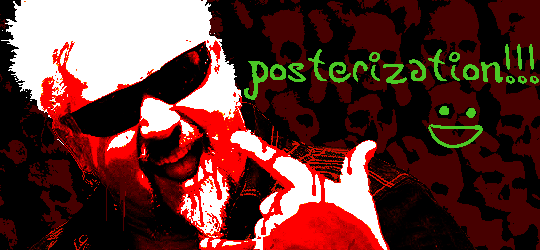
There’s this misconception that the color banding and patterned dithering found in panels is an entirely deliberate, calculated effect Hussie manipulated the image into looking with some specific filter, but this isn’t the case, exactly. It wasn’t so much a conscious decision he took but rather an unavoidable consequence of the medium he partook in: digital art in an age where bandwidth and storage was at a premium.
Not to delve too deeply into the history and technicalities of it, but the long and the short of it is back in the early nineties to late aughts (and even a bit further into the 10s), transferring and storing data over the web was not as fast, plentiful, and affordable as it is now. Filesize was a much more important consideration than the fidelity of an image when displaying it on the web. Especially so when you’re a hobbyist on a budget and paying for your own webhosting, or using a free service with a modest upload limit (even per file!). Besides, what good would it be to post your images online if it takes ages to load them over people's dial-up Internet? Don't even get me STARTED on the meager memory and power the average iGPU had to work with, too.

The original comic strip's resolution was a little more than halved and saved as a GIF rather than a large PNG. That's about an 82.13% reduction in filesize!
So in the early days it was very common for people to take their scans, photographs, and digital drawings and scale them down and publish them as smaller lossily compressed JPEGs or lossless GIFs, the latter of which came at the cost of color range. But it had a wider range of browser support and the feature to be used for animations compared to its successor format, PNG ("PNG's not GIF").
You'd've been hard-pressed to find Hussie use any PNGs himself then. In fact, I think literally the only times he's ever personally employed them and not delegate the artwork to a member of the art team were some of the tiny shrunken down text of a character talking far in the distance and a few select little icons.
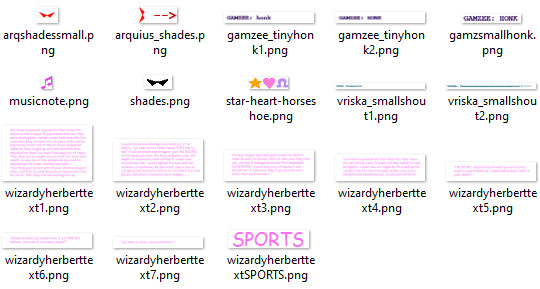
PNGs support semi-transparency unlike GIFs, which is why Hussie used them to preserve the anti-aliasing on the text without having to add an opaque background color.
While PNGs can utilize over 16 million colors in a single image, GIFs have a hard limit of 256 colors per frame. For reference, this small image alone has 604 colors:

For those who can't do the math, 256 is a pretty damn small number.
Smaller still were the palettes in a great deal of MSPA's panels early on in its run. Amazingly, a GIF such as this only uses 7 colors (8 if you count the alpha (which it is)).


Not that they were always strictly so low; occasionally some in the later acts of Homestuck had pretty high counts. This panel uses all 256 spots available, in fact.
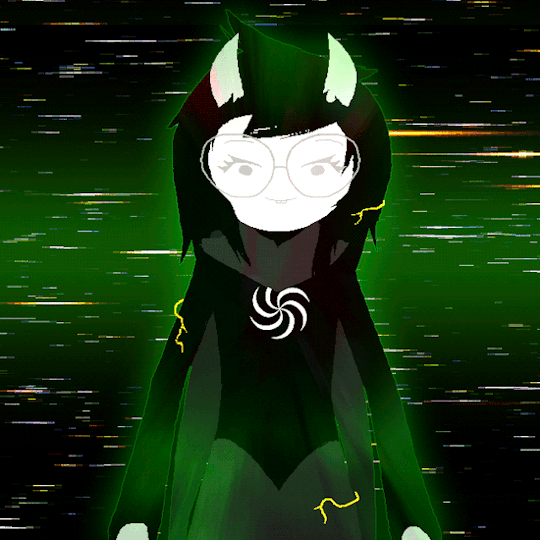

If he had lowered the number any smaller, the quality would have been god-awful.
To the untrained eye, these bands of color below may seem to be the result of a posterization filter (an effect that reduces smooth areas of color into fewer harsh solid regions), but it's really because the image was exported as a GIF with no dithering applied.

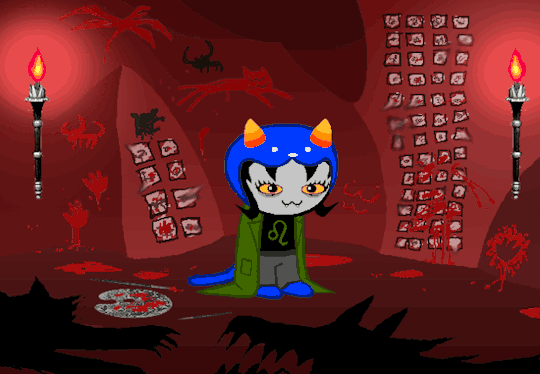
Dithering, to the uninitiated, is how these colors are arranged together to compensate for the paltry palette, producing illusory additional colors. There are three algorithms in Photoshop for this: Diffusion, Pattern, and Noise.

Above is the original image and below is the image reduced to a completely binary 1-bit black and white color palette, to make the effect of each dithering algorithm more obvious.

Diffusion seemingly displaces the pixels around randomly, but it uses error diffusion to calculate what color each pixel should be. In other words, math bullshit. The Floyd-Steinberg algorithm is one such implementation of it, and is usually what this type of error diffusion dithering is called in other software, or some misnomer-ed variation thereof.
The usage of Pattern may hearken back to retro video game graphics for you, as older consoles also suffered from color palette limitations. Sometimes called Ordered dithering because of the orderly patterns it produces. At least, I assumed so. Its etymological roots probably stem from more math bullshit again.
True to its name, Noise is noisy. It’s visually similar to Diffusion dithering, except much more random looking. At least, when binarized like this. Truth be told, I can’t tell the difference between the two at all when using a fuller color table on an image with a lot of detail. It was mainly intended to be used when exporting individual slices of an image that was to be “stitched” back together on a webpage, to mitigate visible seams in the dithering around the edges.
To sate your curiosity, here's how the image looks with no dithering at all:
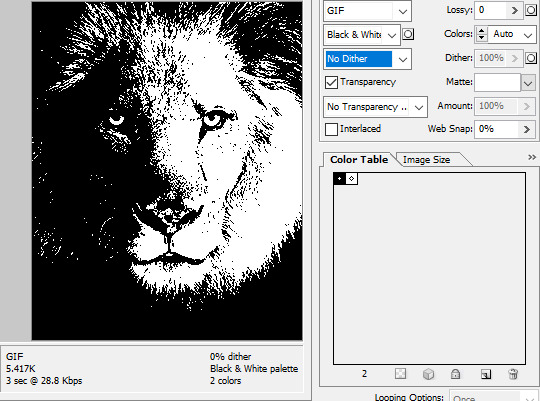
People easily confuse an undithered gif as being the result of posterization, and you couldn't fault them for thinking so. They look almost entirely the same!
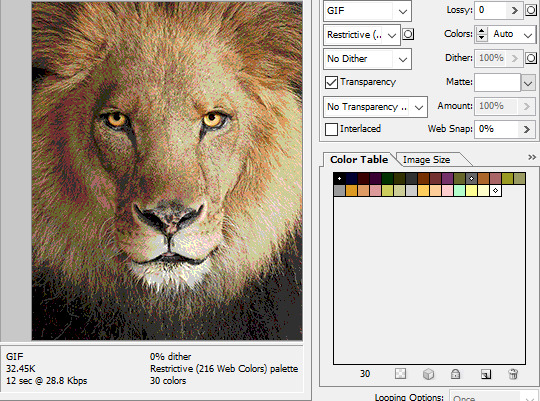


Although I was already aware of this fact when I was much younger, I'm guilty of posterizing myself while editing images back then. Figured I may as well reduce the color count beforehand to help keep the exported GIF looking as intended. I view this as a complete waste of time now, though, and amateurish. Takes away a bit of the authenticity of MSPA art, how the colors and details are so variable between panels. As for WHY they were so variable to begin with, choosing the settings to save the image as requires a judicious examination on a case-by-case basis. In other words, just playing around with the settings until it looks decent.
It's the process of striking a fine balance between an acceptable file size and a "meh, good enough" visual quality that I mentioned earlier. How many colors can you take away until it starts to look shit? Which dithering algorithm helps make it look not as shit while not totally ruining the compression efficacy?
Take, for example, this panel from Problem Sleuth. It has 16 colors, an average amount for the comic, and uses Diffusion dithering. Filesize: 34.5 KB.

Then there's this panel right afterwards. It has 8 colors (again, technically 7 + alpha channel since it's an animated gif), and uses Noise dithering this time. Filesize: 34.0 KB.
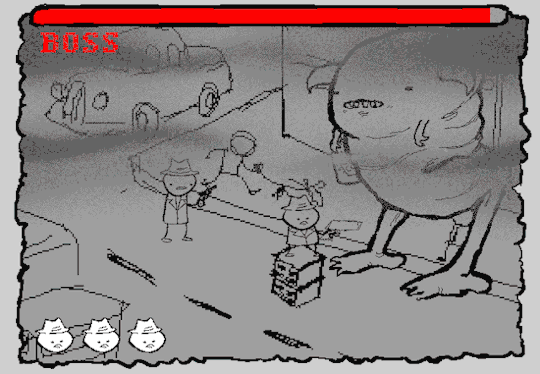
The more colors and animation frames there are, and the more complicated dithering there is, the bigger the file size is going to be. Despite the second panel having half the color count of the first, the heavily noisy dithering alone was enough to inflate the file size back up. On top of that, there's extra image information layered in for the animation, leaving only a mere 0.5 kilobyte difference between the two panels.
So why would Hussie pick the algorithm that compresses worse than the other? The answer: diffusion causes the dithering to jitter around between frames of animation. Recall its description from before, how it functions on nerd shit like math calculations. The way it calculates what each pixel's color will be is decided by the pixels' colors surrounding it, to put it simply. Any difference in the placement of pixels will cause these cascading changes in the dithering like the butterfly effect.
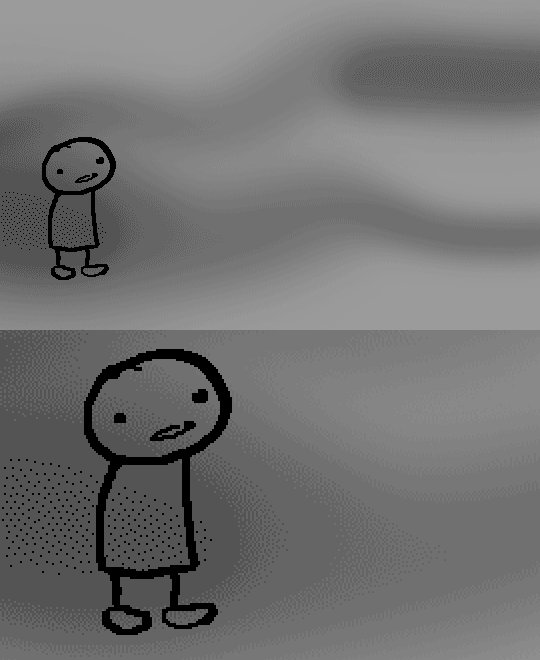
Diffusion dithering, 16 colors. Filesize: 25.2 KB
This isn't the case with Noise or Pattern dithering, since their algorithms use either a texture or a definite array of numbers (more boring nerd shit).
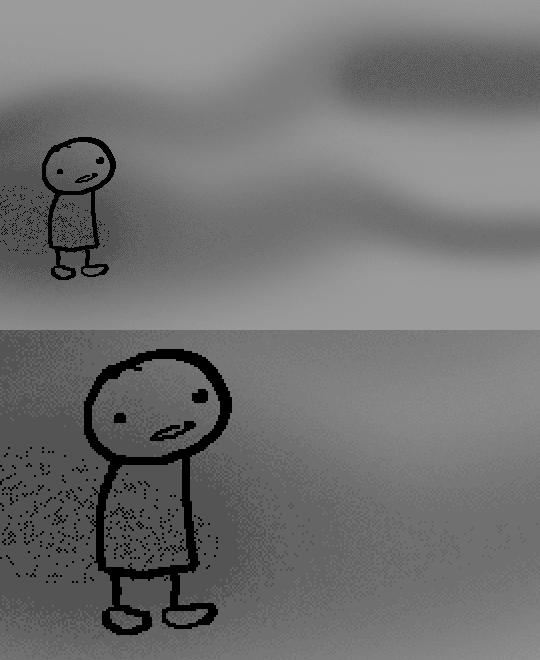
Noise dithering, 16 colors. Filesize: 31.9 KB
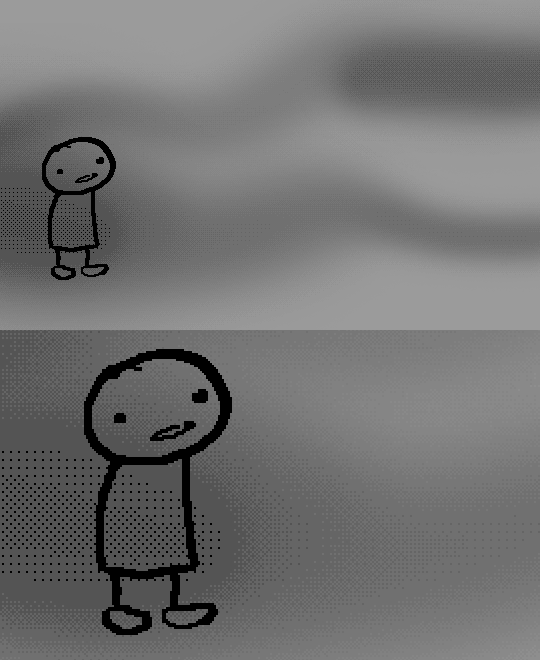
Pattern dithering, 16 colors. Filesize: 23.1 KB
There's a lot more I'd like to talk about, like the different color reduction algorithms, which dither algorithms generally compress better in what cases, and the upward and downward trends of each one’s use over the course of a comic, but since this isn’t a deep dive on GIF optimization, I might save that for another time. This post is already reaching further past the original scope it was meant to cover, and less than 10 images can be uploaded before hitting the limit, which is NOWHERE near enough for me. I should really reevaluate my definition of the word “tidbit”… Anyway, just know that this post suffers from sample selection bias, so while the panels above came from an early section of Problem Sleuth that generally had static panels with diffusion dithering and animated panels with noise dithering, there certainly were animated panels with diffusion later on despite the dither-jittering.
Alright, time to shotgun through the rest of this post, screw segueing. Increasing the contrast almost entirely with “Use Legacy” enabled spreads the tones of the image out evenly, causing the shadows and highlights to clip into pure black and white. The midtones become purely saturated colors. Using the Levels adjustment filter instead, moving both shadow and highlight input level sliders towards the middle also accomplishes the same thing, because, you know, linear readjustment. I'm really resisting the urge to go off on another tangent about color channels and the RGB additive color model.
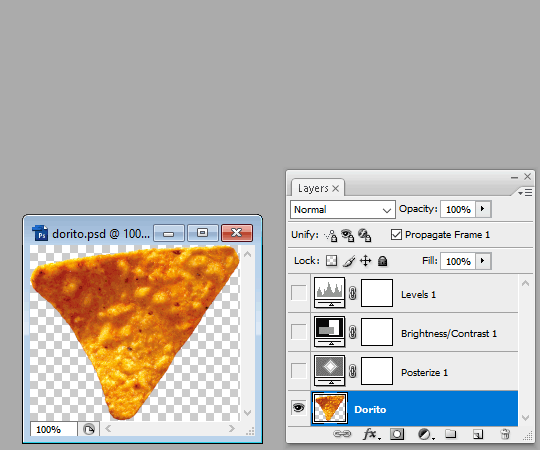
Anyway, there aren't any examples in MSPA that are quite this extreme (at least in color, but I'll save that for a later post), but an image sufficiently high in contrast can be mistaken for being posterized at a glance. Hence the Guy Fieri banner. In preparation for this post, I was attempting to make a pixel-perfect recreation of that panel but hit a wall trying to figure out which and how many filters were used and what each one's settings were, so I sought the wisdom of those in the official Photoshop Discord server. The very first suggestion I got was a posterization filter, by someone who was a supposed senior professional and server moderator, no less. Fucking dipshit, there's too much detail preserved for it to be posterization. Dude totally dissed me and my efforts too, so fuck that moron. I spit on his name and curse his children, and his children's children. The philistines I have to put up with...
In the end, the bloody Guy Fieri recreation proved to be too much for me to get right. I got sort of close at times, but no cigar. These were some of the closest I could manage:

You might be left befuddled after all this, struggling to remember what the point of the blogpost even was. I had meant for it to be a clarification of GIFs and an argument against using the posterization filter, thinking it was never used in MSPA, but while gathering reference images, I found a panel from the Felt intermission that actually WAS posterized! So I’ll eat crow on this one... Whatever, it’s literally the ONE TIME ever.
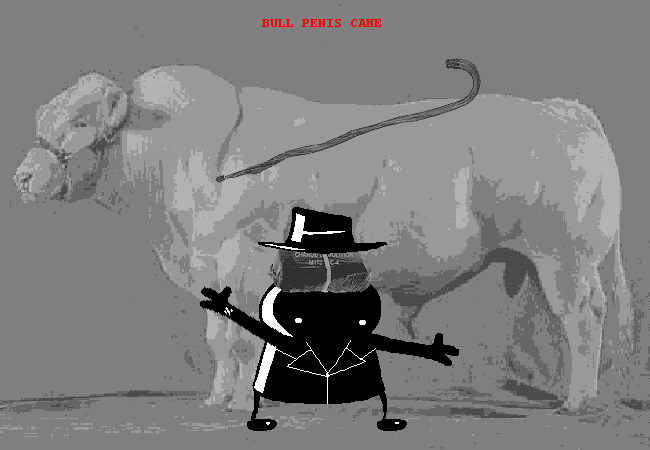
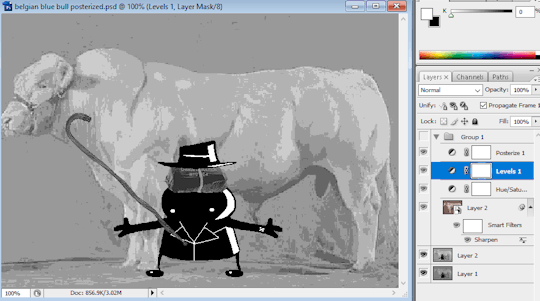

I can tell it's posterization and not gif color quantization because of the pattern dithering and decently preserved details on the bomb and bull penis cane. There would have had to have been no dithering and way fewer colors than the 32, most of which were allotted to the bomb and cane. You can't really selectively choose what gets dithered or more colors like this otherwise.
Thank you for reading if you've gotten this far. That all might have been a lot to take in at once, so if you're still unclear about something, please don't hesitate to leave a question! And as always, here are the PSDs used in this post that are free to peruse.
371 notes
·
View notes
Note
Happy Saturday Mark,
I really enjoyed listening to your Drive to Work podcast on stickiness. It was one of my favorites in months! It was an interesting look behind the curtain design wise and the factors you consider when designing mechanics.
I definitely prefer mechanics that are sticky.
You mentioned that you still think it's worthwhile to design mechanics that aren't sticky but I don't think you really explained why the benefits of this outweigh the counterintuitive nature and memory issues that complex mechanics that aren't sticky create.
You mentioned that Magic is a complex game and that's part of its charm and intrigue. I think that's true, I also think it's true that everything can't be done by memory but I don't think going out of the way to create mechanics that are overly wordy and aren't sticky in a game that is inherently very complicated is helpful to the player. I think there's a fine line between tic-tac-toe and overly complex where it strongly goes against player intuition and memory bandwidth.
I also think you've proven that for 30+ years, Magic can make designs with new mechanics (and reuse existing ones) that appeal to players without going out of the way to make excessively wordy, complex and unsticky mechanics.
By the way, this doesn't mean there isn't merit or value in designing individual cards at higher rarities that are less sticky. Most planeswalker designs aren't sticky and they are often dynamic and interesting cards, although they almost always appear at high rarity and are only a small handful in a single set rather than them being full fledged mechanics that appear at common.
For example, Gemstone Caverns is a fun and dynamic card design that isn't particularly sticky and is fairly complex. That's okay but that doesn't mean it would be a good idea to keyword the mechanic, right?
I feel nearly every time there's a keyworded mechanic that isn't sticky and has memory issues, these mechanics are controversial or divisive. They seem to never be overwhelming popular (i.e. Mutate, Tempted by the Ring, Attractions, The Initiative, Day and Night) and they create so much more baggage and mental load issues compared to sticky mechanics.
I also find it counterintuitive that you acknowledge and understand that more people are playing Magic in eternal formats that are backwards compatible (i.e. Commander) but you seem to highly value creating mechanics that are highly words, complex and not sticky. In my experience, those types of mechanics overwhelm players more in those types of formats compared to less popular (but still very fun) formats like Limited Sealed.
I guess my question is that for most of your podcast you highlighted why sticky designs are a great thing and that while every mechanic can't be as elegant and sticky as Flying, it's important to make mechanics as intuitive as possible to help players, if that's the case, why do you sometimes create mechanics that are very anti-sticky?
Keep up the awesome work and have a great day!
You're conflating "wordy" with "unsticky" and those are not synonyms. I'll use one of the mechanics you listed as an example - daybound/nightbound. The issue with the mechanic wasn't a lack of stickiness. The idea of there being day and then there being night, and things caring about it is pretty intuitive. Players got the gist of what the mechanic was up to.
Day/night's issues had to do with creating inconsistencies (mostly with Werewolves) and having tracking occurring when it didn't matter. So yes, there were play problems, but not because players couldn't wrap there brain around what it did.
Haunt, as a counter example, wasn't particularly wordy, but was very hard to remember.
I believe your question is really "why do we make complex mechanics?" And the answer is there's an audience that really adores the complex mechanics, and we're trying to find a good balance to allow every player to make Magic the kind of game they enjoy.
As to complex mechanics having a bigger burden on eternal games, I agree they do, but I believe that's what players sign up for when they play an eternal format. We're not going to simplify modern day Magic for all the other players that are enjoying the many other ways to play simply to keep eternal formats, which are already highly complex, slightly less complex.
37 notes
·
View notes
Text
The Asia-Pacific memory cube and high-bandwidth memory market was valued at around $1,107.2 million in 2023 and is expected to reach $12,328.6 million by 2033, at a CAGR of 27.25% from 2023 to 2033.
#APAC Hybrid Memory Cube and High-Bandwidth Memory Market#APAC Hybrid Memory Cube and High-Bandwidth Memory Report#APAC Hybrid Memory Cube and High-Bandwidth Memory Industry#Electronics Semiconductor#BIS Research
0 notes
Text
good evening mothers and fuckers of the jury today i bring: Amphoreus Is A Neural Network
my credentials: i’m a first year CS student in 2025.
if y’all’ve been on hsrtwt in the past few days and watching leak after leak come out, then you probably know what i’m yapping about. if not, check this, this, this, and this out.
if you’d rather wait for 3.4 to come out, this is your chance to scroll. rest of y’all are with me lets go gamers
to summarise the 3.4 leaks, lygus and cyrene are apparently running tests on phainon to make the perfect lord ravager, and phainon’s been through 33550336 loops (girl help him wtf) by now. in each loop, he has to watch everyone die over and over again, and phainon, obvi, cannot remember anything. each loop, he’s a complete blank slate, ready to be traumatised over and over again. lygus keeps track of each loop, and keeps refining the data he puts in at the start of each timeloop to remove the ‘imperfections’ from the previous loop that were corrupting his experiments.
ok anyways this is not about this shit we’re here to talk about why amphoreus is a neural network.
all of us here hate ai so i’m pretty sure you know the basic strokes of how it works, but if you don’t, then here’s a simple explanation: a neural network works based on input data. there’s many methods to training a machine, but the most generalised ones are the supervised vs the unsupervised models. how they work is what’s on the lid: supervised models mean that the input data is clearly labeled, and unsupervised models mean the input data is not labeled, which forces the ML algorithm to identify data on its own. based on what we know, i’m inclined to think that lygus is probably using a supervised model each time by removing outlier data and/or noise.
wonderful, let’s talk about mydei now. y’all’ve probably seen a bunch of theories and leaks, but mydei’s highly likely to be a glitch in the system, or even worse, might be a virus that someone’s trying to use to break everyone out of this loop. between all of the theories i’ve seen, the one that connects mydei to the amphoreus loop is the theory that he’s a type of fileless malware.
Tweet ref: https://x.com/tts_maruadelei/status/1932082549217751271
much like the other chrysos heirs, mydei doesn’t actually exist, but let me say: ain’t it interesting how mydei, the demigod of strife, who should have risen to be a titan that governed disputes, is the one who caused glitches in lygus’ system during the forgotten years?
let’s go back to the theory for a second: fileless attacks, simplified, operate based off of memory alone, which makes it much, much harder to detect compared to normal malware and viruses in a computer system. these fileless attacks can manifest in multiple ways, and one of those ways is a Distributed Denial of Service attack, aka, the infamous DDoS attack. DDoS attacks are among the most common cyberattacks of the modern century, and involve ‘botting’, where multiple bots attack one system to overwhelm the system with a high volume of requests.
the idea of ‘overwhelming’ a system can come in the form of exhausting resources like bandwidth, the Central Processing Unit (CPU) and, most importantly, the Random Access Memory (RAM). you know, the RAM being where most fileless malware operates out of. i’m sure you see where i’m going with this.
for more psychic damage, there’s a type of attack called a ‘buffer overrun’ or ‘buffer overflow’. wikipedia defines data buffers as regions of memory that store data temporarily while it’s being moved from one place to another. a ‘buffer overflow’ is a type of DDoS (SIGHS) attack in which data in the buffer exceeds the storage capacity and flows into the following memory location, and corrupts the data in the secondary memory locations, and are the most common DDoS attack styles. sound familiar?
bringing allllll of this back to amphoreus, i wouldn’t be too surprised if mydei’s older versions gained sentience, and started botting lygus’ AI/neural network and caused a DDoS attack, which caused his saves to be completely wiped due to a buffer overflow. thank u for listening can 3.4 hurry Up.
#agni yaps#Honkai Star Rail#Honkai Star Rail theory#HSR theory#HSR 3.4#3.4 leaks#hsr leaks#Mydeimos#Mydei#Lygus#Cyrene
19 notes
·
View notes
Text
Also preserved on our archive (please let me know if you've seen the preprint the article mentions. I'd like to read it and I'm having a bit of trouble finding it--and it's not linked in the article... XP)
By Greg Toppo
New working paper is believed to be the first to link weaker memory and diminished ‘flexible thinking’ skills to the pandemic’s academic downturn.
New research may help educators and families zero in on exactly how the COVID-19 pandemic caused such an unprecedented academic slump, suggesting that the culprit lies in something basic and crucial: children’s ability to think, remember and problem-solve.
And here’s a twist: The same core difficulties are bedeviling teachers too.
The findings, contained in a new working paper, are believed to be the first to identify brain changes as an explanation for why students have suffered, both inside and outside the classroom, since the pandemic drove millions out of the classroom.
Nancy Tsai, a Harvard University psychologist who studies the effects of stress on executive functions and who is the study’s lead author, said the new findings offer the first evidence to help us “understand the ‘why’” of the pandemic downturn — “what is actually causing all these issues that we’re seeing and talking about in the news.”
The paper, from the private tutoring firm MindPrint Learning, examines the cognitive skills of students nationwide and finds that, simply put, over the past several years, kids’ famously ever-changing brains have changed for the worse.
Since the pandemic’s onset, students across all ages and economic levels have begun to demonstrate weaker memory and “flexible thinking” skills — those represent the mental bandwidth needed for multitasking, shifting from one activity to another and juggling the day’s demands. But for a few groups, such as younger and lower-income children, the changes have been more profound.
They also show that their teachers’ brains are weaker in almost identical ways, which could help explain high rates of frustration and burnout. They suggest school districts have their work cut out for them if they want to keep their best employees on the payroll and returning to the classroom each fall.
Understanding the ‘why’ of pandemic downturn The data come from a large, widely-used assessment, the Penn Computerized Neurocognitive Battery, developed in 2013 at the University of Pennsylvania. It consists of a series of cognitive tasks that measure subjects’ accuracy and speed in several major cognitive domains, including working memory, abstraction, sustained attention, episodic memory and processing speed.
MindPrint has administered the assessment periodically to its clients over the past decade. The most recent rounds totaled 35,000 students and 4,000 teachers in 27 states.
By most measures, U.S. students are suffering. Last year, NAEP scores showed the average 13-year-old’s understanding of math dropping to levels last seen in the 1990s and reading levels dropping to 1971, when the test was first administered.
More recent research has shown that while older children are showing encouraging signs of academic recovery, younger kids aren’t making the same progress. Many students who weren’t even in a formal school setting when COVID hit are already falling behind — especially in math.
The Penn assessment found that children who attended elementary or pre-school during the pandemic and who are now 8 to13 years old showed the largest declines in memory.
“Younger kids haven’t really developed a lot of these core cognitive skills,” Tsai said. “It hasn’t solidified for them, either through development or just through practice in the classroom. And so younger kids are more vulnerable to these pandemic shifts.”
But students across all age groups showed worse flexible thinking, which researchers now theorize contributes to lower academic performance — as well as challenging behaviors.
Tsai said kids from lower income backgrounds were more vulnerable to these changes, specifically in verbal reasoning and verbal memory, than their higher income peers, with bigger declines in verbal scores, which are highly correlated with academic achievement in all subjects.
Adults in the study had similar declines in both memory and flexible thinking, possibly explaining higher reported levels of teacher dissatisfaction and low morale.
Nancy Weinstein, MindPrint’s CEO, said weaker flexible thinking isn’t necessarily a problem for experienced teachers who have developed strategies to cope with stressful situations and can modify plans on the fly. But those with less experience may be unable to change gears when lessons go astray or students act out in class. That may lead to higher teacher burnout.
Across the board, teachers’ skills suffered in areas such as verbal and abstract reasoning, spatial perception, attention and working memory, but they saw the greatest losses in verbal memory and flexible thinking.
“If we care about that, we need to know how to help them,” Weinstein said. “And there are some tried and true things you can do.”
She said schools should consider sharing data like this with teachers so they can understand that their frustration in class might not be due to students alone. That could make a big difference, she said, in “their willingness to put in the effort to change, as opposed to saying, ‘Why bother?’”
For students, Weinstein said, offering them more opportunities to practice skills with breaks and rest between study sessions could help. Schools should also consider “scaffolded memorization” techniques that break learning into chunks and address each individually.
Could such techniques help students — and teachers — regain a measure of pre-pandemic skills? Weinstein suggests the answer is “Yes.”
“The environment will matter, but certainly we can regain some of that if we do the right things,” she said. “And we know what the right things are to do.”
Crystal Green-Braswell, coordinator of staff wellness and culture for the Little Rock School District in Arkansas, said offering the Penn assessment to teachers and staff has helped many think more deeply about their work — and about their own thinking.
“People who have had the assessment will say, ‘Now, you know my processing speed is slower — y’all are going to have to give me a moment,’” she said.
That’s a huge change in a profession in which most workers have been asked “to take ourselves out of the equation and just get the work done,” Green-Braswell said.
She sees offering such insights to educators as part of “rehumanizing” teaching. “When we provide this kind of assessment and we provide this kind of space for folks to actually get to know themselves, we are humanizing this profession and helping people to realize, ‘You play a role. You play an active role. You matter.’ ”
#mask up#covid#pandemic#covid 19#wear a mask#public health#coronavirus#sars cov 2#still coviding#wear a respirator
25 notes
·
View notes
Text
On April 15, U.S. chipmaker Nvidia published a filing to the U.S. Securities and Exchange Commission indicating that the government has restricted the company from selling its less advanced graphics processing unit (GPU)—the H20—to China. The company is now required to obtain a license from the U.S. Commerce Department’s Bureau of Industry and Security to sell the H20 and any other chips “achieving the H20’s memory bandwidth, interconnect bandwidth, or combination thereof” to China, according to the filing.
Similarly, a filing from AMD stated that the firm is now restricted from selling its MI308 GPU to China—and likely any chips that have equal or higher performance in the future. Intel’s artificial intelligence accelerator Gaudi will also be restricted under the new control threshold, which reportedly appears to limit chips with total DRAM bandwidth of 1,400 gigabytes per second or more, input/output bandwidth of 1,100 GB per second or more, or a total of both of 1,700 GB per second or more.
The possible new threshold not only restricts the advanced chips that were already controlled but also the less advanced chips from Nvidia, AMD, and other chipmakers, including Nvidia’s H20, AMD’s MI308X, and Intel’s Gaudi, which were used to comply with the export control threshold and intended primarily for sale in the Chinese market.
The new restriction came roughly a week after NPR reported that the Trump administration had decided to back off on regulating the H20. Prior to that report, curbs on the H20 and chips with comparable performance had been widely anticipated by analysts on Wall Street, industry experts in Silicon Valley, and policy circles in Washington.
The latest set of chip controls could be seen as following on from export restrictions during the Biden administration and as continuation of the Trump administration’s efforts to limit China’s access to advanced AI hardware. But the new measure carries far-reaching industry implications that could fundamentally reshape the landscape of China’s AI chip market.
The impact of the new rule on the industry is profound. With the new controls, Nvidia is estimated to immediately lose about $15 billion to $16 billion, according to a J.P. Morgan analysis. AMD, on the other hand, faces $1.5 billion to 1.8 billion in lost revenue, accounting for roughly 10 percent of its estimated data center revenue this year.
Yet the implications go beyond immediate financial damage. If the restriction persists, it will fundamentally reshape the Chinese AI chip market landscape and mark the start of a broader retreat for U.S. AI accelerators from China. That includes not only GPU manufacturers such as Nvidia, AMD, and Intel but also firms providing application-specific integrated circuits—another type of chips targeting specific AI workloads, such as Google’s TPU and Amazon Web Servies’ Trainium.
The new rule will make it nearly impossible for U.S. firms such as Nvidia and AMD to design and sell chips that are export-compliant and competitive in the Chinese market. That means these firms’ market share in the Chinese AI chip market will decline over time, as they are forced to withdraw almost all of their offerings of both advanced and less advanced chips while Chinese firms gradually capture the remaining market.
The H20 and the upgraded H20E are already only marginally ahead of their Chinese competitors. Huawei’s latest AI chip Ascend 910C delivers 2.6 times the computational performance of the H20, although it offers 20 percent less memory bandwidth, which is vital for the inference training and reasoning models that are a key part of modern AI.
The H20’s memory bandwidth, along with Nvidia’s widely adopted software stack, a parallel computing platform and programming model that enables efficient GPU utilization for AI, high-performance computing, and scientific workloads, have been key differentiators driving demand from Chinese AI firms and keeping them competitive in the Chinese market. China acquired more than 1 million units of the H20 in 2024 and has been stockpiling the chip in response to looming concerns about controls since early 2025.
The narrowing gap between the H20 and Huawei’s 910C highlights the growing ability of Chinese AI chipmakers to meet domestic compute demand without foreign GPUs. As of today, Huawei’s 910C is in mass production, with units already delivered to customers and broader mass shipments reportedly starting in May. Most recently, Huawei is reportedly approaching customers about testing its enhanced version of the 910-series GPU—the 910D. Its next-generation chip—the Ascend 920—is expected to enter mass production in the second half of 2025.
Notably, Huawei is just one of many Chinese firms poised to fill the gap left by U.S. suppliers. Chinese AI chip companies such as Cambricon, Hygon, Enflame, Iluvatar CoreX, Biren, and Moore Threads are actively developing more competitive domestic AI chips to capture this expanding market.
Over the next few years, Chinese firms such as Alibaba, ByteDance, Baidu, and Tencent will likely continue to rely on existing inventories of Nvidia and AMD chips—such as the H100, H200, H800, and H20—acquired prior to the implementation of export controls. For example, ByteDance’s current GPU inventory in China is rumored to include 16,000-17,000 units of the A100, 60,000 units of the A800, and 24,000-25,000 units of the H800. Its overseas businesses likely have more than 20,000 units of the H100, 270,000 of the H20, and tens of thousands of cards such as the L20 and L40.
Advanced chips, including the limited amount of Nvidia’s Blackwell-series GPUs, may also continue entering the Chinese market via illicit or gray-market channels, given the enduring performance advantage and wide adoption of these chips over most Chinese domestic alternatives. The Blackwell GPUs and other cutting-edge chips could still be sold legally to the oversea data centers of leading Chinese AI companies to potentially train their AI models.
Similarly, other leading Chinese AI firms still possess significant chip stockpiles. Assuming export controls continue to restrict Chinese AI companies’ access to advanced computing resources, existing GPU inventories should still enable model development over the next several years. Typically, GPUs have a four- to five-year depreciation lifecycle, providing a window during which Chinese domestic GPU manufacturers can advance their capabilities and begin supplying more competitive chips to support domestic AI development.
Ultimately, time is now on the Chinese firms’ side. As inventories of foreign GPUs gradually depreciate and become obsolete, Chinese firms are expected to shift toward and adopt more domestically produced AI chips to meet ongoing compute needs at a time when local chipmakers offer more powerful alternatives. China’s overall computing demand will steadily rise, given the continued advancement of the AI industry, and such incremental growth in demand will likely be met by Chinese AI chipmakers.
As a result, the tens of billions of dollars in revenue that would have gone to Nvidia and AMD will be gradually captured by Chinese AI firms in the coming years. In a rough assessment, the latest ban causes Nvidia and AMD instant losses of about $16.5 billion to $17.8 billion—about 70 percent of what Huawei spent on research and development in 2024.
This new market paradigm will not only strengthen the market position and financial sustainability of domestic Chinese AI chipmakers but also enhance their capacity to reinvest in R&D. In turn, this will accelerate innovation, improve competitiveness, and fortify China’s broader AI hardware supply chain—ultimately contributing to the long-term resilience and advancement of Chinese AI capabilities.
More importantly, the growing domestic adoption of Chinese GPUs enables local firms to refine their products more efficiently through accelerated and larger feedback loops from local enterprises. As the Nvidia-led GPU ecosystem stalls and gradually retreats from the Chinese market, this shift creates space for local players to build a domestic GPU ecosystem—one that may increasingly lock out foreign competitors and raise re-entry barriers over time.
A total ban on the H20 would likely slow China’s short-term growth in AI compute capacity by removing a key source of advanced chips. But the medium- to longer-term impact is less clear. Chinese AI companies, as previously noted, remain very capable of developing their AI by using a large number of existing Nvidia and AMD GPUs for the next few years, alongside a growing supply of improving domestic alternatives. The U.S. leadership’s ultimate goal of using export controls to constrain China’s AI development remains uncertain, as the gap between the two countries’ AI model capabilities appears to be narrowing rather than widening.
What is clear, however, is the broader industry impact of the new controls. If sustained, they will mark the beginning of a major withdrawal of U.S. AI chipmakers from the Chinese market—paving the way for a significant boost to domestic Chinese AI chipmakers. In trying to isolate China, the United States may end up giving Chinese firms a leg up.
3 notes
·
View notes